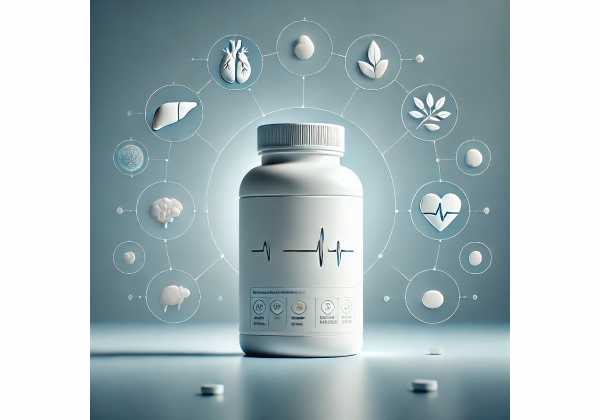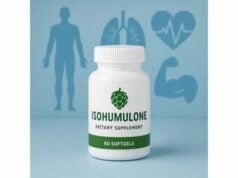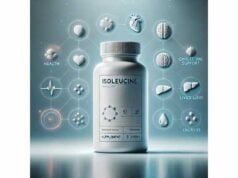
Isomaltulose (also known by the trade name Palatinose) is a naturally derived carbohydrate made of glucose and fructose linked by an α-1,6 bond. Because of this bond, it is digested more slowly than table sugar, producing a steadier rise in blood glucose and insulin. Many people choose isomaltulose to smooth out energy dips, support exercise fueling, and reduce sugar spikes after meals. It delivers the same calories as sucrose (4 kcal/g) but with a low glycemic impact and a neutral taste that works in beverages, shakes, and baked goods. Research has explored potential advantages for endurance exercise, glucose management, dental health, and even next-meal effects on appetite and metabolism. This guide explains what isomaltulose is, how it works, where it may help, how to dose it safely, who should avoid it, and what the human evidence shows—so you can decide whether it fits your goals and daily routine.
Key Insights
- Low-glycemic carbohydrate that produces a slower, steadier blood glucose rise than sucrose.
- May support endurance sessions by promoting stable energy availability and higher fat use.
- Typical supplemental use: 10–40 g per day; sports fueling: 0.3–1.0 g/kg pre-exercise.
- Possible side effects: mild bloating or loose stools when large amounts are taken quickly.
- Avoid or seek medical advice if you have hereditary fructose intolerance or on strict low-carb therapy.
Table of Contents
- What is isomaltulose and how it works
- Benefits backed by human studies
- How to use it day to day
- How much should I take and when
- Side effects, safety, and who should avoid
- Evidence at a glance
What is isomaltulose and how it works
Isomaltulose is a disaccharide composed of one glucose and one fructose molecule joined by an α-1,6 glycosidic bond. That seemingly small structural detail matters. Enzymes in the small intestine cleave α-1,6 bonds more slowly than the α-1,2 bond in sucrose, so digestion and absorption are more gradual. The result is a lower and flatter post-meal glucose curve, a smaller insulin excursion, and a more even energy release over one to three hours.
Unlike non-nutritive sweeteners, isomaltulose provides metabolizable carbohydrate energy (4 kcal/g). The slower delivery shifts substrate use: with less early insulin, fat oxidation is relatively higher while carbohydrate is spared. In exercise contexts, this often means steadier glycemia through prolonged efforts and a later availability of carbohydrate as intensity ramps up.
From a sensory standpoint, isomaltulose is about half as sweet as sucrose with a clean, sugar-like flavor. It is heat-stable and has excellent acid stability in beverages, which makes it practical across sports drinks, ready-to-mix powders, yogurts, and some baked goods. It is also non-hygroscopic compared with many sugars, so it helps manage texture in dry blends.
A second property relevant to everyday health is oral non-cariogenicity. Dental plaque bacteria struggle to ferment isomaltulose to acids that lower plaque pH. In regulatory assessments, this characteristic has supported tooth-friendly claims when products meet testing criteria. For people who sip flavored drinks over long periods (a common behavior with sports hydration), choosing a carbohydrate that does not readily promote enamel demineralization is a meaningful plus.
Finally, regulatory bodies have evaluated isomaltulose for general use. Opinions have concluded it is as safe as sucrose for the intended uses and populations when consumed within typical dietary amounts. That background gives consumers and product formulators a clear safety baseline and allows attention to shift toward practical application: what to pair it with, when to use it, and how much to take for specific goals.
Benefits backed by human studies
Smoother post-meal glycemia and insulin response. When people consume isomaltulose instead of sucrose or rapidly digested maltodextrin, the early rise in blood glucose and insulin is smaller. This matters in two everyday scenarios: breakfast and pre-exercise. At breakfast, a flatter glucose curve can reduce mid-morning dips in energy and help with appetite control for some individuals. Before workouts, less early insulin means less suppression of fat oxidation, so the body draws more from fat stores while sparing glycogen for later.
Endurance performance contexts. In randomized trials, pre-exercise drinks made with isomaltulose have produced more stable blood glucose during prolonged cycling and, in some protocols, small but measurable improvements in time-trial performance compared with maltodextrin. The mechanism is plausible: slower carbohydrate availability encourages greater fat contribution in the early phases, saving limited muscle glycogen for final segments where high power output depends more on carbohydrate. That said, not every endurance study shows a performance advantage; effects are sensitive to the exact exercise model (duration, intensity, and the presence or absence of carbohydrate intake during exercise). What does appear consistent is reduced glycemic volatility.
Support for people managing blood sugar. Because isomaltulose is fully digestible yet low glycemic, it can be a practical substitute for sucrose in meals and drinks, especially where a sweet taste or carbohydrate energy is desired without sharp spikes. Clinical trials and meta-analyses report attenuated post-prandial glucose and insulin responses versus sucrose in healthy adults and in populations with impaired glucose tolerance or type 2 diabetes, without compromising total energy availability. The effect size depends on dose, co-ingested macronutrients, and timing.
Gastrointestinal comfort. Compared with some sugar alcohols or very high fructose loads, isomaltulose tends to be well tolerated. Because it is absorbed in the small intestine, it does not typically cause the osmotic laxation so often seen with poorly absorbed carbohydrates. In exercise studies, drinks using isomaltulose have shown similar or better gastrointestinal comfort than rapidly absorbed sugars during steady endurance work. As always, individual tolerance varies, especially at higher doses taken quickly.
Oral health advantages. Isomaltulose is much less fermentable by oral bacteria than sucrose. For people who regularly use sweetened hydration during training or throughout the day, choosing a carbohydrate that does not readily promote a prolonged drop in plaque pH is prudent. When combined with normal oral hygiene (brushing with fluoride, limiting frequent snacking), this characteristic helps reduce the conditions that lead to enamel demineralization.
Everyday energy management. Beyond lab endpoints, many users report more stable mid-morning or mid-afternoon energy when a portion of their day’s carbohydrate comes from isomaltulose rather than sucrose. While subjective, this aligns with the physiology of a slower glycemic rise and less compensatory dip. Pairing isomaltulose with protein and fiber amplifies the effect on satiety and further moderates glycemia.
**Where benefits are *not* expected.** If your goal is explosive, very short-duration power (e.g., 30–90 seconds), the slower release of isomaltulose just before the bout is unlikely to help, and rapidly available carbohydrate or pre-existing glycogen stores matter more. Similarly, if you already fuel heavily with mid-workout carbohydrate, the advantage of pre-exercise isomaltulose may be smaller; consistent intra-exercise fueling can dominate outcomes.
How to use it day to day
Breakfast swaps. Replacing table sugar in coffee, tea, smoothies, or yogurt with isomaltulose is a simple change. For a balanced breakfast, combine 20–30 g of isomaltulose with 20–30 g of protein (e.g., Greek yogurt, whey, eggs) and a fiber source (berries, oats, chia). This pairing slows gastric emptying, spreads energy release over several hours, and improves satiety.
Pre-exercise fueling. For endurance sessions lasting 60–150 minutes, a pre-exercise drink that provides 0.5–0.8 g/kg of isomaltulose 60–90 minutes before the start supports glycemic stability and early fat use. Example: a 70-kg cyclist takes ~35–55 g mixed into 400–600 mL of water with a pinch of sodium. For very long events or high intensity, combine isomaltulose with faster carbohydrates (e.g., maltodextrin or glucose) in a ~1:1 ratio to cover both early and late energy needs.
During exercise. Isomaltulose can be used as part of in-workout fueling, but because it releases slowly, many athletes prefer it as a component rather than the sole carbohydrate. A practical approach is a mixed-carbohydrate bottle or gel totaling 30–60 g/h for moderate intensity and 60–90 g/h for high intensity, with isomaltulose contributing one-third to one-half of the total. Test in training to fine-tune tolerance.
Snack and dessert reformulation. In home recipes, you can substitute isomaltulose for table sugar by weight. Expect slightly less sweetness (about 50–60% of sucrose’s sweetness). In baked goods, isomaltulose’s heat stability helps preserve structure and browning, though the Maillard reaction and moisture retention may differ slightly. Start by replacing 25–50% of sucrose; adjust to taste and texture.
For glucose management. When your aim is smoother post-meal glycemia, two tactics work well: (1) replace sucrose in drinks and sweet foods with isomaltulose; (2) take isomaltulose as the sole carbohydrate in a small pre-meal “primer” snack (e.g., 10–15 g in water) 10–20 minutes before a mixed meal to blunt early spikes. Monitor your response if you use a glucose meter or continuous glucose monitor and adjust the dose accordingly.
Dental health contexts. If you habitually sip flavored beverages, choosing an option sweetened with isomaltulose rather than sucrose can lower acidogenic potential. This does not replace good oral hygiene, but it reduces one risk factor for enamel demineralization—especially relevant for athletes who graze on carbohydrate over long training blocks.
Stacking with other ingredients.
- Protein: supports satiety and muscle repair; pairs well with isomaltulose in breakfast or recovery shakes.
- Electrolytes: useful in pre- and in-workout drinks; sodium helps water absorption and thirst drive.
- Caffeine: if desired for performance or alertness, 1–3 mg/kg taken with an isomaltulose drink 45–60 minutes pre-exercise is a common strategy.
- Fiber: viscous fibers further slow absorption; for pre-workout fueling, keep fiber modest (≤5 g) to reduce GI load.
Practical tips. Dissolve powder fully (it is readily soluble), start with smaller servings to assess tolerance, and plan timing so peak availability matches your activity. For workdays, a 20–25 g serving in a mid-morning coffee or shake can smooth the noon time dip without the “sugar crash.”
How much should I take and when
General daily use (non-athletes). A common range is 10–40 g per day, divided across meals or beverages. Many people notice benefits at the low end when replacing sucrose; higher intakes are usually reserved for sports or heavy training days.
Pre-exercise dosing. Match the dose to session length and intensity:
- Short/moderate sessions (45–75 min, steady): 0.3–0.5 g/kg 30–60 minutes prior.
- Endurance sessions (90–150 min): 0.5–0.8 g/kg 45–90 minutes prior.
- Very long or high-intensity events: 0.6–1.0 g/kg pre-exercise, combined with faster carbs and continued in-exercise fueling.
During exercise. Use 30–60 g/h total carbohydrate for moderate intensity and 60–90 g/h for high intensity. If isomaltulose is part of the mix, let it contribute 33–50% of the hourly total to balance slow and fast sources.
Post-exercise recovery. If you finish glycogen-depleting work and are not immediately entering another high-intensity session, isomaltulose can be part of a recovery meal. Combine 0.6–1.0 g/kg carbohydrate (from mixed sources) with 20–40 g protein in the first 1–2 hours. If rapid glycogen restoration is critical (back-to-back competitions), emphasize faster carbohydrates.
For glucose management at meals. Replace sucrose gram-for-gram with isomaltulose in drinks, desserts, or sauces. For a targeted effect, take 10–15 g in water 10–20 minutes before a carbohydrate-containing meal to moderate the early post-prandial rise. Pair with protein and non-starchy vegetables for additional control.
Upper limits and tolerance. Most healthy adults tolerate up to ~1 g/kg spread across a day without issue. Taking very large single boluses (e.g., >50–60 g at once) can cause mild GI symptoms in some people, especially when taken rapidly without other foods. Introduce gradually and adjust based on your response.
Hydration and electrolytes. For pre-exercise mixes, aim for 400–600 mL fluid with 300–600 mg sodium alongside your carbohydrate dose to optimize absorption and maintain plasma volume, particularly in heat.
Special populations.
- Type 1 or insulin-treated type 2 diabetes: Because isomaltulose alters the timing of glucose appearance, insulin timing and doses may need adjustment under clinical guidance. Start with small amounts and monitor closely.
- Children and adolescents: Use food-based amounts and discuss supplemental use with a pediatric healthcare professional, especially in sports contexts.
- Weight management: If you are tracking calories, remember that isomaltulose has 4 kcal/g; the benefit is glycemic, not lower energy density.
Side effects, safety, and who should avoid
Overall safety profile. Regulatory evaluations have concluded that isomaltulose, when used as intended, is safe for the general population and comparable to sucrose in safety. It is fully digested and absorbed in the small intestine, so it does not typically cause the osmotic laxation associated with poorly absorbed sugars or many sugar alcohols.
Common, usually mild effects. When large amounts are taken quickly—especially in plain water and on an empty stomach—some people experience bloating, abdominal fullness, or loose stools. Introducing it gradually, splitting doses, and consuming it with food or electrolytes reduces these effects.
Allergies and intolerances.
- Hereditary fructose intolerance (HFI): Avoid isomaltulose. It contains fructose, which poses risks in HFI.
- Fructose malabsorption: Many individuals tolerate isomaltulose better than free fructose because it is absorbed as a disaccharide first, but sensitivity varies; trial cautiously.
- FODMAPs: Isomaltulose is not a polyol or oligosaccharide; however, individual responses differ on low-FODMAP diets. Start low and monitor symptoms.
Glucose-lowering medications and insulin. Because isomaltulose reduces early post-prandial glucose and insulin excursions relative to sucrose, monitor for hypoglycemia if you use insulin or insulin secretagogues and adjust under medical supervision. The total carbohydrate load still counts toward daily targets.
Pregnancy and lactation. As a nutritive carbohydrate found in small amounts in nature and widely used in foods, isomaltulose is generally considered acceptable as part of a balanced diet. If you have gestational diabetes or impaired glucose tolerance, discuss carbohydrate choices with your clinician and dietitian.
Dentition considerations. Isomaltulose’s low acidogenic potential makes it tooth-friendlier than sucrose when sipped over time. Nonetheless, frequent exposure to any carbohydrate can support plaque formation; maintain oral hygiene and avoid constant grazing on sweetened drinks.
Interactions. No notable drug–nutrient interactions are documented for isomaltulose specifically. The main “interaction” is with exercise intensity and timing—it changes substrate use patterns and may influence how you plan your fueling strategy.
Storage and handling. Keep powder in a sealed container away from moisture. It dissolves readily in room-temperature water; warm water speeds dissolution but is not required. It is heat-stable for typical home cooking and baking temperatures.
When to avoid or get advice first.
- Diagnosed HFI or severe fructose intolerance.
- Active GI disorders with carbohydrate malabsorption where new sugars trigger symptoms.
- Strict ketogenic or very-low-carb therapeutic diets (isomaltulose is still carbohydrate).
- Insulin-treated diabetes without the ability to monitor and adjust dosing.
Evidence at a glance
What it is. A slow-digesting, fully caloric disaccharide (glucose + fructose, α-1,6 bond) that yields a lower glycemic and insulinemic response than sucrose, with 4 kcal/g.
Core findings across trials and reviews.
- Glycemic control: Consistently lower early post-prandial glucose and insulin versus sucrose; total area under the curve may be similar or modestly reduced depending on dose and meal composition.
- Exercise metabolism: Pre-exercise isomaltulose often leads to higher fat oxidation early and more stable blood glucose during prolonged efforts compared with maltodextrin or sucrose. Performance benefits are protocol-dependent (most evident when no additional carbohydrate is provided during exercise and when a late time-trial is used).
- Gastric handling: Similar tolerance to other simple carbohydrates; no systematic delay in gastric emptying that would impair fueling when timed appropriately.
- Dental health: Non-cariogenic relative to sucrose under regulatory testing conditions.
- Safety: Determined as safe as sucrose for intended uses in general populations under assessed conditions.
Practical translation.
- For breakfast or a pre-work session, 20–30 g is a reasonable start.
- For endurance days, pre-fuel with 0.5–0.8 g/kg 45–90 minutes before; combine with faster carbs during the session if intensity is high or duration is long.
- Replace sucrose in drinks and recipes 1:1 by weight, then adjust sweetness to preference.
- Introduce gradually and pair with protein/fiber for appetite and glycemic benefits.
Limitations and research gaps.
- Performance effects vary with in-exercise feeding and exercise model; more head-to-head work in real-world race scenarios would help.
- Long-term metabolic outcomes (HbA1c, weight, cardiometabolic markers) need longer RCTs beyond acute and short-term trials.
- Personalized responses (e.g., by glucose tolerance status, age, microbiome) warrant further study.
References
- Safety of isomaltulose syrup (dried) as a novel food pursuant to Regulation (EU) 2015/2283 2024 (Guideline/Opinion)
- Isomaltulose and normal energy-yielding metabolism 2021 (Guideline/Opinion)
- Effect of Isomaltulose on Glycemic and Insulinemic Responses: A Systematic Review and Meta-analysis of Randomized Controlled Trials 2022 (Systematic Review)
- Substrate Utilization and Cycling Performance Following Palatinose Ingestion: A Randomized, Double-Blind, Controlled Trial 2016 (RCT)
- Food labeling; health claims; dietary noncariogenic carbohydrate sweeteners and dental caries 2008 (Guideline/Regulatory Final Rule)
Disclaimer
This information is for educational purposes and is not a substitute for personalized medical advice, diagnosis, or treatment. Talk with your healthcare professional before changing your diet, using isomaltulose for glucose management, or incorporating it into sports fueling—especially if you have diabetes, hereditary fructose intolerance, gastrointestinal disorders, are pregnant or breastfeeding, or take medications that affect blood sugar.
If you found this guide helpful, consider sharing it with others on Facebook, X (formerly Twitter), or your favorite platform, and follow us for future evidence-based nutrition articles. Your support helps us continue creating high-quality, reader-first content.










